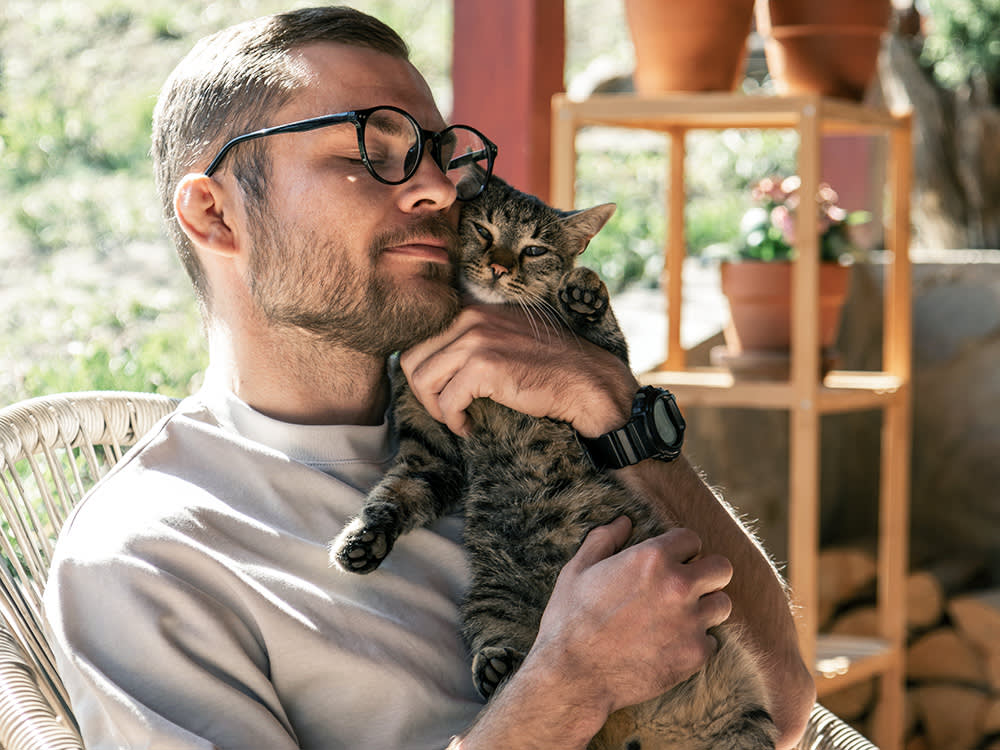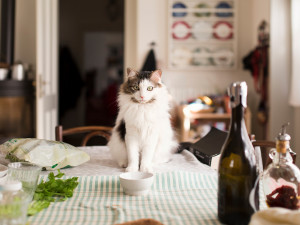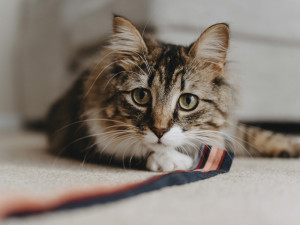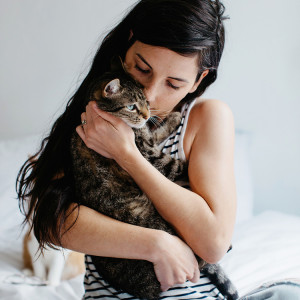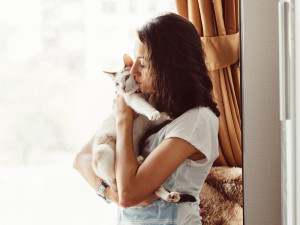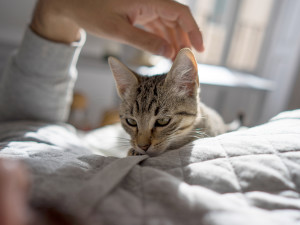Should You Hug Your Cat?
With consent, of course...
It seems there’s a ‘national’ day for everything, from National Bagel Day (15 January) to National Alien Abduction Day (20 March) – but one we can really get behind is National Hug Your Cat Day, which lands on 4 June every year. Although most cat parents don’t need a specific day to show affection and love towards their feline companions, it’s still nice for them to be commemorated in the bizarre calendar of national days.
But do cats actually like being hugged? And how can you show affection to your feline if they’re not the cuddly type? We asked the experts to find out.
Get (totally free) deals for food, treats, accessories, tech and way more pet parenting must-haves.
Should you hug your cat?
“Some cats love being held and cuddled, while some completely hate it,” explains trainee animal behaviourist Lottie Phillips. “It’s really down to the individual cat’s behaviour and temperament.”
If you have a cat who wants to be held all the time, like the famously clingy cat Chase from @dontstopmeowingopens in new tab, you’ll know about it. “These types of cats typically love affection from their humans and often enjoy being hugged,” says Lottie.
But if you have a cat who struggles, flicks their tail, bites, scratches or yowls when you pick them up or try to cuddle them on your lap, then you should always let them go and never restrain them or force them to hug you, explains Lottie. “Many cats hate being picked up and it can be really stressful for them because it restricts their movement and makes them feel unsafe,” says Lottie. It can also have negative associations for them, such as you trying to get them into their carrier for a vet trip, trimming their nails or giving them medication.
Lottie says you should always wait for your cat to come to you for affection rather than the other way around. “If your cat climbs on to your lap or snuggles up next to you in bed, not only does it feel like an honour, it also shows that they really want to as opposed to you forcing your affection on them and them tolerating it, or becoming stressed and struggling to get away,” she says. But if you don’t have a cuddly cat, you shouldn’t feel too offended – “Some cats just aren’t the cuddly type, in the same way some humans aren’t.”
Other ways cats show affection
Not all cats are snugglers, but just because your cat isn’t big on cuddles, it doesn’t mean they don’t like you – there are plenty of other ways they can show that they love you and vice versa.
Some signs of cat affection are obvious: purring, rubbing up against you, allowing you to stroke them. But others can be difficult to decipher, especially if you’re new to cats or have one who seems particularly aloof. Once you know how your cat likes to show affection, you can use that information to show affection back (speak to them in their own language, as it were) and strengthen your bond.
Here are some different cat love languages you can look out for.
1. Slow blinking
A slow blink is a cat’s way of showing you that they trust you and feel safe with you – an essential component in any loving relationship. “Intense staring with wide-open eyes can sometimes be a threatening gesture in cats and stare-downs among cats often turn into fights,” says cat behaviourist Cristin Tamburoopens in new tab. “But when a cat slow blinks at you, they are showing you that they feel calm and safe in your presence.” So, the next time your cat slow blinks at you, slow blink back and let them know the feeling is mutual.
2. Putting their bottoms in your face
If you have multiple cats, you’ve probably seen them sniffing each other’s bottoms from time to time (just like dogs). But what you might not realise is that the sniff-ee is just as active in this exchange as the sniff-er. It’s just another way for cats to say, ‘We’re cool’. Now, we’re not suggesting you stick your bum in your cat’s face, but if you want to give it a shot, it probably couldn’t hurt.
3. Showing you their bellies
Don’t get it twisted – this is not always an invitation to touch said belly. Some cats like belly rubs, but many do not and might bite, hiss or scratch. “A cat’s belly is their most vulnerable spot,” says Cristin. “So when they show it to you, they’re saying ‘I trust you’, not necessarily ‘I want you to touch me’.”
4. Being in the same room as you
It may seem insignificant, but the fact that your cat doesn’t leave the room when you enter is proof that they like you. If your cat is particularly aloof, try spending time around them. Read a book, scroll on your phone, just let them see that you want to be in the same space as them.
5. Bringing you presents
Cats are hunters by nature and an outdoor cat will often bring their human dead rodents (or pieces of dead rodents) as tokens of affection. Indoor cats, on the other hand, might bring toys, pieces of string or whatever else they find around the house. Accept your cat’s gift in the spirit in which it was intended and give them a little stroke or treat to show your appreciation. Or play with them – cats love to play. Sometimes it’s just a matter of figuring out exactly what response will be the most meaningful to them.
Can I make my non-cuddly cat into a cuddly cat?
If your cat is not big on physical affection, there’s nothing you can do to force a personality change, but “some cat parents report that a cat they’ve lived with for years who used to not be very affectionate, becomes more so with age,” says Lottie. So, ultimately, it all comes down to patience and consent. You can build your bond gradually over time, increasing trust and showing them love in the ways they respond best to, whether that’s treats, playtime, strokes and scratches on the head or enticing them on to the sofa with you using tasty bribes – but the most important thing to remember is to never force your cat to do anything they don’t want to do, which includes hugging.
